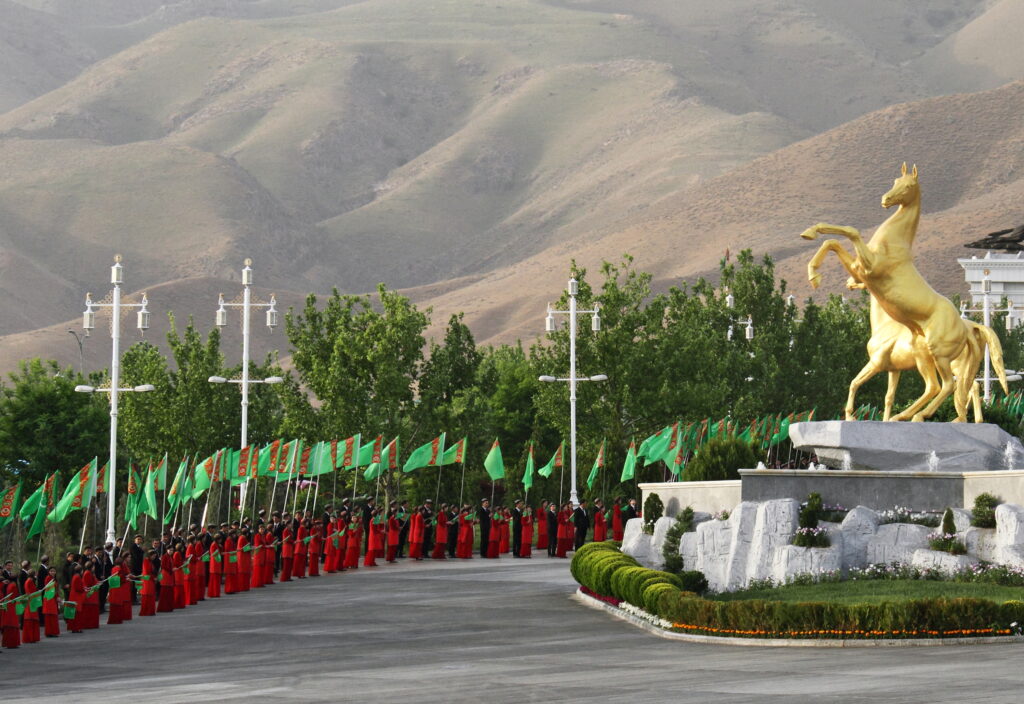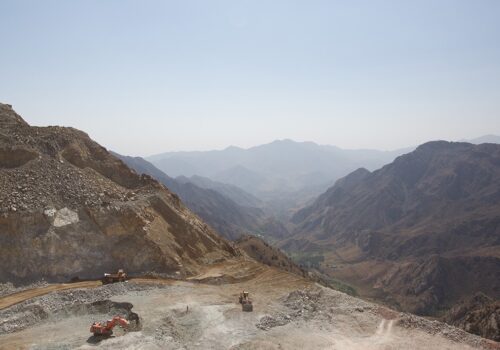The vast, arid landscapes of Turkmenistan, stretching across Central Asia, are facing a profound and growing threat—a deepening water crisis that casts a shadow over its future stability, as well as over the security of the entire region. While often overshadowed by other domestic problems, the struggle for water in Turkmenistan is a critical issue demanding immediate attention. Exacerbated by a changing climate, almost a century of unsustainable practices, and new regional developments, this crisis is not just an environmental problem—it’s an unfolding human tragedy that could have significant economic and political ramifications well beyond its borders.
The roots of scarcity
Turkmenistan’s vulnerability to water stress is the highest in Central Asia, a precarious position resulting from a complex interplay of factors. Much of the country’s water infrastructure is a relic of the Soviet Union, including open canals and irrigation ditches that are tragically inefficient. Estimates suggest that anywhere between 30 percent and 60 percent of the water transported through these systems is lost to evaporation or seeps into the sandy soil before reaching its intended destination. These physical conditions are compounded by systemic mismanagement. A cohesive national strategy for water conservation and distribution remains elusive, hampered by a lack of coordination among governing bodies.
This inefficiency is particularly damaging given the demands placed upon the water supply, primarily by agriculture, which consumes an estimated 94 percent of the nation’s water resources. The heart of the problem lies in the legacy of Soviet-era planning: industrial production dedicated to cotton, a thirsty crop ill-suited to Turkmenistan’s naturally arid climate. This reliance on water-intensive agriculture depletes precious reserves. A shift toward drought-resistant crops, modern techniques such as drip irrigation, and greater agricultural diversification is long overdue to alleviate the immense pressure on the water supply.
Compounding these internal challenges are external pressures. Turkmenistan relies on the Amu Darya river, which flows along its border with Afghanistan and Uzbekistan, for roughly 90 percent of its water. The construction of Afghanistan’s Qosh Tepa Canal upstream represents a significant new threat. By diverting substantial amounts of water from the Amu Darya for its own agricultural ambitions, the canal project could reduce the flow reaching Turkmenistan, further straining an already stressed system. The absence of robust transboundary water-sharing agreements and effective diplomatic channels risks tensions, highlighting the urgent need for dialogue, potentially facilitated by neutral international mediators, to navigate this issue peacefully.
Overlaying all these factors is the undeniable impact of climate change. Projections indicate that temperatures in Turkmenistan are set to rise faster than the global average, inevitably leading to more frequent and severe droughts, further diminishing already scarce water resources and pushing the nation closer to the brink.
The human and environmental toll
The consequences of this escalating water scarcity are already being felt across Turkmenistan. Food insecurity is on the rise, with reports indicating that 12 percent of the population faces severe challenges in accessing sufficient food—among the highest rate among former Soviet nations. Access to safe drinking water is also becoming increasingly precarious. Residents across the country, including in the capital city of Ashgabat, report frequent water cuts and shortages. The tap water that is available is often of questionable quality, forcing many to rely on more expensive bottled water.
Reduced water flow and dying vegetation leave the soil vulnerable to erosion, intensifying the dust, sand, and salt storms that plague the region. In the northern Dashoguz province, vast tracts of agricultural land are severely affected by salt storms originating from the desiccated Aral Sea, posing significant risks to respiratory health and further degrading farmland. This vicious cycle of soil salinity, exacerbated by inefficient irrigation and poor drainage, diminishes air quality and agricultural productivity. Altogether, this creates an increasingly hostile environment for both people and wildlife.
The economic repercussions are also significant. Turkmenistan’s economy relies on natural gas exports, which constitute nearly 90 percent of its export revenue. However, the natural gas industry itself is water-intensive, requiring substantial amounts for cooling systems, equipment cleaning, and extraction processes. Water scarcity could directly impede the nation’s ability to maintain current natural gas production levels, potentially impacting national revenue and the funding of essential public services.
Furthermore, the unique ecosystems adapted to Turkmenistan’s arid conditions, including the vast Karakum Desert, are under threat. Rivers, wetlands, and oases—vital habitats for diverse flora, fauna, and migratory birds—risk shrinking or disappearing entirely, leading to biodiversity loss and pushing vulnerable species toward extinction.
Finally, the crisis is beginning to drive climate migration. Faced with failing crops, soil degradation, rising food prices, and dwindling agricultural employment (a sector that employs over 40 percent of the workforce), people are increasingly forced to migrate in search of better living conditions, both within the country and abroad. This displacement adds another layer of social and economic strain.
A call to action to maintain regional stability
The water crisis unfolding in Turkmenistan is not merely a domestic issue; its ripples will likely be felt regionally and globally. Declining agricultural output could increase Turkmenistan’s reliance on international food markets, potentially contributing to fluctuations in global food prices. More critically, the potent combination of environmental degradation, economic hardship, and potential social unrest fueled by water scarcity could destabilize the country and, by extension, the wider Central Asian region. History, including the the Syrian uprising, serves as a warning of how severe drought and resource mismanagement can exacerbate existing tensions and lead to conflict. Such instability could create power vacuums, ripe for large global powers.
Therefore, addressing Turkmenistan’s water challenge is a matter of international concern. Proactive engagement from the United States and the European Union could play a crucial role in promoting sustainable solutions and regional cooperation. In addition, supporting comprehensive research and data collection on water resources, climate impacts, and agricultural practices is essential for informed policymaking. The United States and the European Union should take the lead in facilitating regional dialogues involving Turkmenistan, Afghanistan, Tajikistan, and Uzbekistan. Such initiatives will be critical for fostering transboundary cooperation and preventing conflicts over shared water resources such as the Amu Darya. Furthermore, technical assistance and funding from the United States and the European Union, potentially channeled through civil society organizations, could help implement sustainable water management practices on the ground—from promoting efficient irrigation techniques to supporting public education campaigns on water conservation.
Turkmenistan’s struggle with water scarcity is a powerful illustration of the interconnected challenges facing many parts of the world in the twenty-first century, where climate change, resource management, and geopolitical interests collide. Ignoring this looming crisis is not an option. Concerted action, grounded in cooperation and sustainable practices, is essential not only to secure a livable future for Turkmens but also to maintain stability in the region.
Rasul Satymov is a researcher with Progres Foundation with a focus on climate change, energy, and water issues in Turkmenistan.
Further reading
Tue, Jun 3, 2025
How Kazakhstan can anchor a resilient rare‑earth supply chain for the West
New Atlanticist By
By partnering with Kazakhstan on rare-earth element mining, the United States can reduce its dependence on China and build a more secure critical minerals supply chain.
Tue, Apr 29, 2025
Are small modular reactors in Kazakhstan’s nuclear energy future?
New Atlanticist By
While Kazakhstan’s immediate nuclear focus is on a large-scale power plant, in the coming years small modular reactors could offer several advantages.
Tue, Apr 15, 2025
Central Asia’s geography inhibits a US critical minerals partnership
EnergySource By
Central Asia holds vast critical mineral resources, but limited export capacity and complex environmental, geopolitical, and legal risks make large-scale US investment unfeasible. The US should instead focus its efforts on allied nations with established mineral export industries.
Image: Artists perform during celebrations for the national Turkmen Horse Day and the Turkmen Shepherd Dog Day near Ashgabat, Turkmenistan April 25, 2021. REUTERS/Vyacheslav Sarkisyan.




